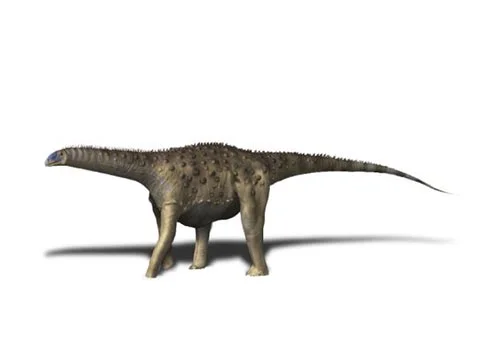Saltasaurus (Salta lizard)

Salt-ah-sore-us
Bonaparte & Powell - 1980
Herbivore
Estimated 40-50 feet in length
Sauropod
S. loricatus (type)
Argentina, Salta Province - Lecho Formation
Late Cretaceous, 75-70 million years ago
Saltasaurus Facts
Saltasaurus, meaning “Salta lizard,” is a genus of sauropod dinosaur that lived during the Late Cretaceous period, about 70-75 million years ago. It was named after the Salta Province in Argentina, where its fossils were first discovered.
Saltasaurus was a medium-sized sauropod, measuring about 40-50 feet in length and weighing around 5-7 tons. It was unique among sauropods in that its body was covered in small bony plates, or osteoderms, which were embedded in its skin. These osteoderms were arranged in rows along the dinosaur’s back and sides, and would have provided some degree of protection against predators.
Saltasaurus had a long neck and a small head relative to the rest of its body, with a beak-like mouth for cropping vegetation. It had sturdy, column-like legs and a long tail that likely served as a counterbalance to its massive body. Like other sauropods, Saltasaurus was a herbivore, and its diet likely consisted of tough, fibrous plants that it would have had to grind up with its peg-like teeth.
One of the most intriguing things about Saltasaurus is that its fossils have been found in association with those of theropod dinosaurs, which were the primary predators of the Late Cretaceous period. This suggests that Saltasaurus was able to coexist with and potentially defend itself against these predators, perhaps using its bony osteoderms as a form of protection.
Saltasaurus is an important and fascinating dinosaur that has provided valuable insights into the evolution and behavior of sauropods during the Late Cretaceous period. Its distinctive bony plates and association with theropod predators make it a particularly intriguing example of dinosaur ecology and evolution.



